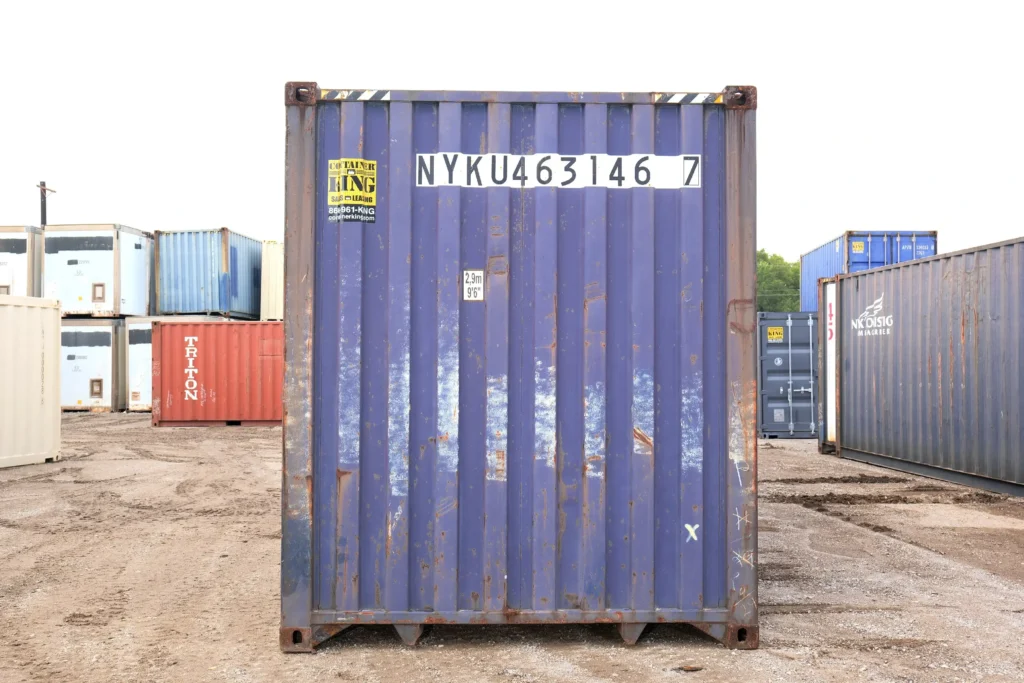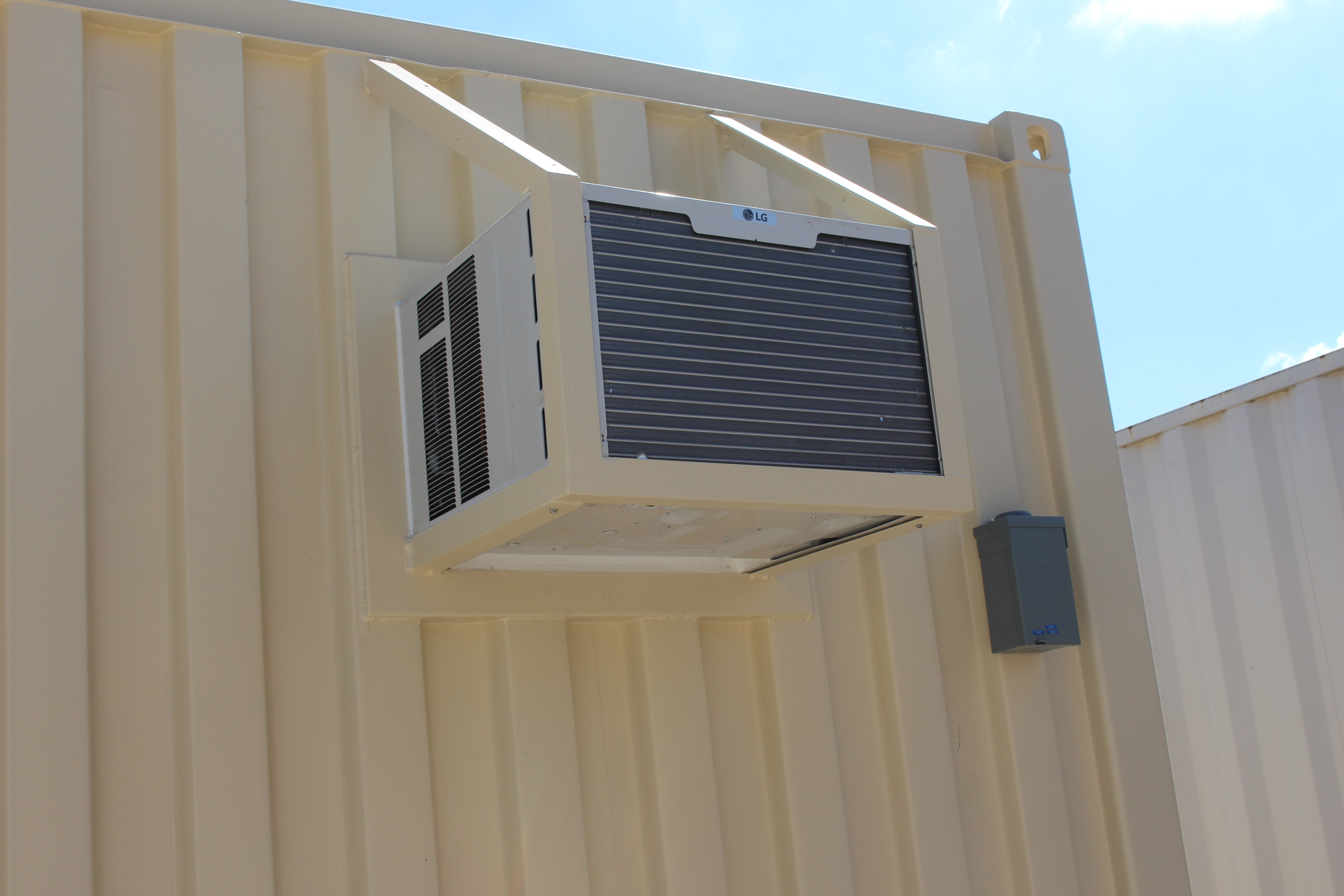The Ultimate Guide to Shipping Containers: Uses, Costs, and Innovations
Due to their sturdy and adaptable nature, shipping containers are now being repurposed into storage units, workspaces, homes, and emergency shelters. Initially built for global transportation, these sturdy, long-lasting, and eco-friendly structures have evolved into versatile solutions for housing, business operations, and beyond.
As industries and individuals seek cost-effective and sustainable alternatives, shipping containers have proven to be an innovative answer. Their modular design allows for endless customization, making them a practical choice for businesses, homeowners, and entrepreneurs alike.
Choosing the Right Shipping Container for Your Needs
New vs. Used Containers
Before purchasing, decide whether a new or used container fits your needs. New containers, also called “one-trip” containers, offer pristine condition and longevity, while used containers are more budget-friendly but may require maintenance.
Size Guide
Shipping containers come in various sizes:
- 10ft Containers: Best for small storage or mobile office setups.
- 20ft Containers: Ideal for moderate storage, tiny homes, or pop-up shops.
- 40ft Containers: Great for large-scale projects such as housing, workshops, or retail spaces.
Specialized Containers
Some projects require specialized containers, including refrigerated containers for temperature-sensitive goods, open-top containers for oversized items, and double-door containers for easier access.
Shipping Container Garages: A Secure and Versatile Solution
One of the most exciting applications of shipping containers is in garage solutions. Whether you need extra storage for vehicles, tools, or equipment, shipping container garages offer ample space and unparalleled security. With customizable options like doors, windows, shelving, and insulation, you can tailor them to fit your exact needs.
The Rise of Shipping Container Offices
For businesses seeking cost-effective and flexible workspaces, shipping container offices provide a modern alternative to traditional brick-and-mortar structures. Easily modified for specific business needs, they offer an eco-friendly and stylish solution for office spaces.
How to Buy a Shipping Container
Where to Purchase
Options for purchasing include direct suppliers, resellers, and online marketplaces. Always research suppliers and check reviews before committing.
Inspection Checklist
Before buying, inspect the container for:
- Structural integrity (no major dents or rust)
- Functional doors and locks
- Dry interior with no water leaks
- Certification for shipping (if needed)
Understanding Delivery Logistics
Ensure your location is accessible for delivery and offloading. Some sites require a crane or forklift for placement.
Understanding Shipping Container Costs
Factors Affecting Shipping Container Prices
Several factors influence costs:
- Size: Standard containers are typically more affordable than high cube or specialized containers.
- Condition & Age: New containers cost more but are pristine, while used ones offer savings but may require maintenance.
- Location: Prices vary based on demand, transportation costs, and proximity to ports.
- Customization: Modifications like insulation, ventilation, or shelving add to the overall cost.
Exploring Container Grades
Shipping containers are classified into different grades based on conditions:
- One-Trip Containers: Nearly new, having made just one trip from the manufacturer.
- Cargo-Worthy Containers: Certified for international shipping and structurally sound.
- Wind and Watertight (WWT) Containers: Suitable for storage but may have minor cosmetic damage.
- As-Is Containers: The cheapest option but may need repairs before use.
Additional Costs to Consider
Beyond the purchase price, consider these additional expenses:
- Delivery Fees: Based on distance and accessibility.
- Customization Costs: Includes modifications such as doors, windows, or electrical installations.
- Maintenance: Regular inspections and repairs ensure long-term usability.
Customization & Modification Options
Shipping containers can be transformed to suit a variety of needs with the right modifications. Whether used for storage, offices, or homes, customization options allow you to create a space that fits your requirements.
Interior Features
- Insulation to regulate temperature and ensure comfort.
- Custom flooring, such as wood, steel, or vinyl, to enhance durability.
- Electrical installations to support lighting, power outlets, and appliances.
Adding insulation and high-quality flooring can improve the usability of a container, making it suitable for living or working environments.
Exterior Enhancements
- Roll-up doors for easy and secure access.
- Windows and ventilation to increase airflow and light.
- Exterior paint and coatings to enhance durability and weather resistance.
Exterior modifications help ensure protection from environmental elements while improving accessibility and design appeal.
Smart Technology
- Security cameras and motion sensors to enhance safety.
- Automated locks for remote security management.
- Climate control systems to maintain stable internal temperatures for sensitive goods.
With the integration of smart technology, shipping containers can be turned into high-tech, secure spaces suitable for a variety of applications.
Permits & Regulations for Container Use
Zoning Laws & Building Codes
Before placing a container, check local zoning laws and building codes to ensure compliance.
Permit Process
Some areas require permits for permanent structures. Research local requirements before installation.
HOA & Neighborhood Considerations
If placing a container in a residential area, check HOA rules and community regulations.
Creative and Functional Uses for Shipping Containers
Tiny Homes and Off-Grid Living
Shipping container homes are gaining traction as an affordable, sustainable housing option. With modular designs, easy customization, and energy-efficient insulation, these homes offer comfort and style at a fraction of traditional housing costs.
Pop-Up Shops & Cafés
Retailers are embracing shipping containers for their mobility and cost-effectiveness. Pop-up shops, mobile cafés, and food stands benefit from their portability and unique aesthetic appeal.
Urban Farming & Sustainability
Repurposed containers are transforming agriculture with vertical farms and hydroponic systems, allowing fresh produce to be grown in urban areas year-round.
Disaster Relief & Emergency Shelters
Modified shipping containers provide quick and durable shelter solutions during natural disasters. They are easily transportable, secure, and adaptable for medical clinics or temporary housing.
Maintaining and Extending the Life of Your Shipping Container
Keeping your shipping container in top condition ensures it remains functional for years to come. Here are some simple maintenance steps to follow:
Rust Prevention & Treatment
- Regular Inspections: Check for rust, especially in corners and along seams where moisture tends to collect.
- Protective Coatings: Apply rust-resistant paint or sealants to prevent corrosion.
- Quick Repairs: If you spot rust, sand it down and apply a rust inhibitor to stop further damage.
Structural Integrity Checks
- Doors & Locks: Ensure hinges, locking mechanisms, and seals are in good shape for secure access.
- Wall & Floor Inspection: Look for dents, cracks, or warping that may weaken the container.
- Repair as Needed: Address any issues promptly to maintain the container’s durability.
Weatherproofing & Insulation Tips
- Insulation Choices: Use spray foam, fiberglass, or panel insulation to regulate temperature and reduce condensation.
- Seal Gaps: Apply weatherproof sealants to any openings to prevent leaks.
- Improve Ventilation: Install vents or fans to enhance airflow and reduce humidity, preventing mold and moisture buildup.
By following these simple steps, you can extend the lifespan of your shipping container and keep it in excellent condition for storage, work, or living purposes.
Comparing Shipping Containers to Traditional Structures
Cost Savings
Containers offer a budget-friendly alternative to brick-and-mortar buildings with lower upfront costs and minimal maintenance.
Build Speed & Flexibility
Container structures can be set up quickly, making them ideal for businesses and housing projects.
Environmental Impact
Reusing shipping containers reduces waste and minimizes carbon footprints compared to traditional construction.
Comparing Shipping Containers to Traditional Structures
Shipping containers offer several advantages over traditional construction methods. Below are key factors to consider:
Cost Savings
- Lower Upfront Costs: Shipping containers are generally more affordable than constructing a new building from scratch.
- Reduced Labor Expenses: Prefabricated containers require less manpower for assembly.
- Long-Term Value: Containers can be repurposed multiple times, making them a cost-effective choice for homeowners and businesses alike.
Build Speed & Flexibility
- Quick Setup: Unlike traditional buildings that take months to construct, shipping container structures can be ready in weeks.
- Modular Design: Easy expansion allows for modifications and adjustments as needed.
- Versatility: Ideal for businesses, pop-up shops, and residential add-ons looking for a fast, adaptable solution.
Environmental Impact
- Recycling Benefits: Reusing shipping containers reduces industrial waste.
- Lower Demand for New Materials: Cuts down on the need for wood, concrete, and steel.
- Eco-Friendly Innovations: Many container projects incorporate solar panels, rainwater collection, and green roofing to further minimize environmental impact.
Shipping Containers: The Future of Storage and Beyond
Why Choose a Shipping Container for Storage?
- Durability: Built from heavy-duty steel, these containers withstand harsh weather conditions.
- Security: Lockable doors and reinforced walls keep stored items safe.
- Eco-Friendly: Repurposing containers reduces waste and promotes sustainability.
- Cost-Effective: Compared to building permanent structures, containers offer a budget-friendly solution.
Get Started Today
Container King provides high-quality shipping container solutions in the greater Dallas-Fort Worth, TX, area. Whether you’re investing in a container office, home, or storage solution, we have you covered. Request a quote today or contact us to learn more!










